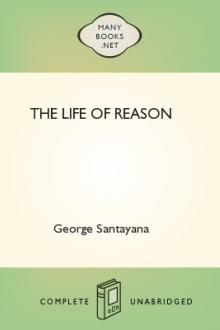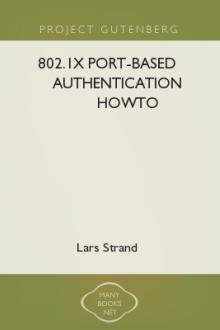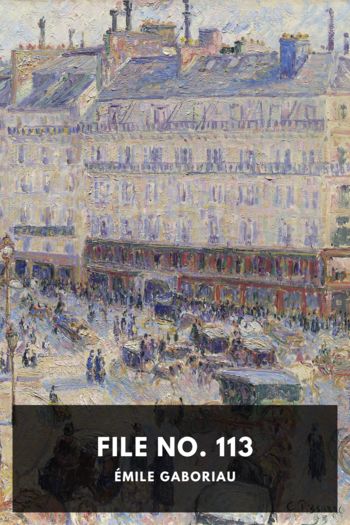The Life of Reason, George Santayana [e novels to read .txt] 📗

- Author: George Santayana
- Performer: -
Book online «The Life of Reason, George Santayana [e novels to read .txt] 📗». Author George Santayana
PLASTIC REPRESENTATION
Imitation is a fertile principle in the Life of Reason. We have seen that it furnishes the only rational sanction for belief in any fellow mind; now we shall see how it creates the most glorious and interesting of plastic arts. The machinery of imitation is obscure but its prevalence is obvious, and even in the present rudimentary state of human biology we may perhaps divine some of its general features. In a motor image the mind represents prophetically what the body is about to execute: but all images are more or less motor, so that no idea, apparently, can occupy the mind unless the body has received some impulse to enact the same. The plastic instinct to reproduce what is seen is therefore simply an uninterrupted and adequate seeing; these two phenomena, separable logically and divided in Cartesian psychology by an artificial chasm, are inseparable in existence and are, for natural history, two parts of the same event. That an image should exist for consciousness is, abstractly regarded, a fact which neither involves motion nor constitutes knowledge; but that natural relation to ulterior events which endows that image with a cognitive function identifies it at the same time with the motor impulse which accompanies the idea. If the image involved no bodily attitude and prophesied no action it would refer to no eventual existence and would have no practical meaning. Even if it meant to refer to something ulterior it would, under those circumstances, miss its aim, seeing that no natural relation connected it with any object which could support or verify its asseverations. It might feel significant, like a dream, but its significance would be vain and not really self-transcendent; for it is in the world of events that logic must find application, if it cares for applicability at all. This needful bond between ideas and the further existences they forebode is not merely a logical postulate, taken on trust because the ideas in themselves assert it; it is a previous and genetic bond, proper to the soil in which the idea flourishes and a condition of its existence. For the idea expresses unawares a present cerebral event of which the ulterior event consciously looked to is a descendant or an ancestor; so that the ripening of that idea, or its prior history, leads materially to the fact which the idea seeks to represent ideally.
In some such fashion we may come to conceive how imitative art is simply the perfection and fulfilment of sensation. The act of apperception in which a sensation is reflected upon and understood is already an internal reproduction. The object is retraced and gone over in the mind, not without quite perceptible movements in the limbs, which sway, as it were, in sympathy with the object's habit. Presumably this incipient imitation of the object is the physical basis for apperception itself; the stimulus, whatever devious courses it may pursue, reconstitutes itself into an impulse to render the object again, as we acquire the accent which we often hear. This imitation sometimes has the happiest results, in that the animal fights with one that fights, and runs after one that runs away from him. All this happens initially, as we may still observe in ourselves, quite without thought of eventual profit; although if chase leads to contact, and contact stimulates hunger or lust, movements important for preservation will quickly follow. Such eventual utilities, however, like all utilities, are supported by a prodigious gratuitous vitality, and long before a practical or scientific use of sensation is attained its artistic force is in full operation. If art be play, it is only because all life is play in the beginning. Rational adjustments to truth and to benefit supervene only occasionally and at a higher level.
Imitation cannot, of course, result in a literal repetition of the object that suggests it. The copy is secondary; it does not iterate the model by creating a second object on the same plane of reality, but reproduces the form in a new medium and gives it a different function. In these latter circumstances lies the imitative essence of the second image: for one leaf does not imitate another nor is each twin the other's copy. Like sensibility, imitation remodels a given being so that it becomes, in certain formal respects, like another being in its environment. It is a response and an index, by which note is taken of a situation or of its possible developments. When a man involuntarily imitates other men, he does not become those other persons; he is simply modified by their presence in a manner that allows him to conceive their will and their independent existence, not without growing similar to them in some measure and framing a genuine representation of them in his soul. He enacts what he understands, and his understanding consists precisely in knowing that he is re-enacting something which has its collateral existence elsewhere in nature. An element in the percipient repeats the total movement and tendency of the person perceived. The imitation, though akin to what it imitates, and reproducing it, lies in a different medium, and accordingly has a specific individuality and specific effects. Imitation is far more than similarity, nor does its ideal function lie in bringing a flat and unmeaning similarity about. It has a representative and intellectual value because in reproducing the forms of things it reproduces them in a fresh substance to a new purpose.
If I imitate mankind by following their fashions, I add one to the million and improve nothing: but if I imitate them under proper inhibitions and in the service of my own ends, I really understand them, and, by representing what I do not bodily become, I preserve and enlarge my own being and make it relevant ideally to what it physically depends upon. Assimilation is a way of drifting through the flux or of letting it drift through oneself; representation, on the contrary, is a principle of progress. To grow by accumulating passions and fancies is at best to grow in bulk: it is to become what a colony or a hydra might be. But to make the accretions which time brings to your being representative of what you are not, and do not wish to be, is to grow in dignity. It is to be wise and prepared. It is to survey a universe without ceasing to be a mind.
A product of imitative sensibility is accordingly on a higher plane than the original existences it introduces to one another—the ignorant individual and the unknown world. Imitation in softening the body into physical adjustment stimulates the mind to ideal representation. This is the case even when the stimulus is a contagious influence or habit, though the response may then be slavish and the representation vague. Sheep jumping a wall after their leader doubtless feel that they are not alone; and though their action may have no purpose it probably has a felt sanction and reward. Men also think they invoke an authority when they appeal to the quod semper et ubique et ab omnibus, and a conscious unanimity is a human if not a rational joy. When, however, the stimulus to imitation is not so pervasive and touches chiefly a single sense, when what it arouses is a movement of the hand or eye retracing the object, then the response becomes very definitely cognitive. It constitutes an observation of fact, an acquaintance with a thing's structure amounting to technical knowledge; for such a survey leaves behind it a power to reconstitute the process it involved. It leaves an efficacious idea. In an idle moment, when the information thus acquired need not be put to instant use, the new-born faculty may work itself out spontaneously. The sound heard is repeated, the thing observed is sketched, the event conceived is acted out in pantomime. Then imitation rounds itself out; an uninhibited sensation has become an instinct to keep that sensation alive, and plastic representation has begun.
The secret of representative genius is simple enough. All hangs on intense, exhaustive, rehearsed sensation. To paint is a way of letting vision work; nor should the amateur imagine that while he lacks technical knowledge he can have in his possession all the ideal burden of an art. His reaction will be personal and adventitious, and he will miss the artist's real inspiration and ignore his genuine successes. You may instruct a poet about literature, but his allegiance is to emotion. You may offer the sculptor your comparative observations on style and taste; he may or may not care to listen, but what he knows and loves is the human body. Critics are in this way always one stage behind or beyond the artist; their operation is reflective and his is direct. In transferring to his special medium what he has before him his whole mind is lost in the object; as the marksman, to shoot straight, looks at the mark. How successful the result is, or how appealing to human nature, he judges afterwards, as an outsider might, and usually judges ill; since there is no life less apt to yield a broad understanding for human affairs or even for the residue of art itself, than the life of a man inspired, a man absorbed, as the genuine artist is, in his own travail. But into this travail, into this digestion and reproduction of the thing seen, a critic can hardly enter. Having himself the ulterior office of judge, he must not hope to rival nature's children in their sportiveness and intuition.
In an age of moral confusion, these circumstances may lead to a strange shifting of rôles. The critic, feeling that something in the artist has escaped him, may labour to put himself in the artist's place. If he succeeded, the result would only be to make him a biographer; he would be describing in words the very intuitions which the artist had rendered in some other medium. To understand how the artist felt, however, is not criticism; criticism is an investigation of what the work is good for. Its function may be chiefly to awaken certain emotions in the beholder, to deepen in him certain habits of apperception; but even this most æsthetic element in a work's operation does not borrow its value from the possible fact that the artist also shared those habits and emotions. If he did, and if they are desirable, so much the better for him; but his work's value would still consist entirely in its power to propagate such good effects, whether they were already present in him or not. All criticism is therefore moral, since it deals with benefits and their relative





Comments (0)